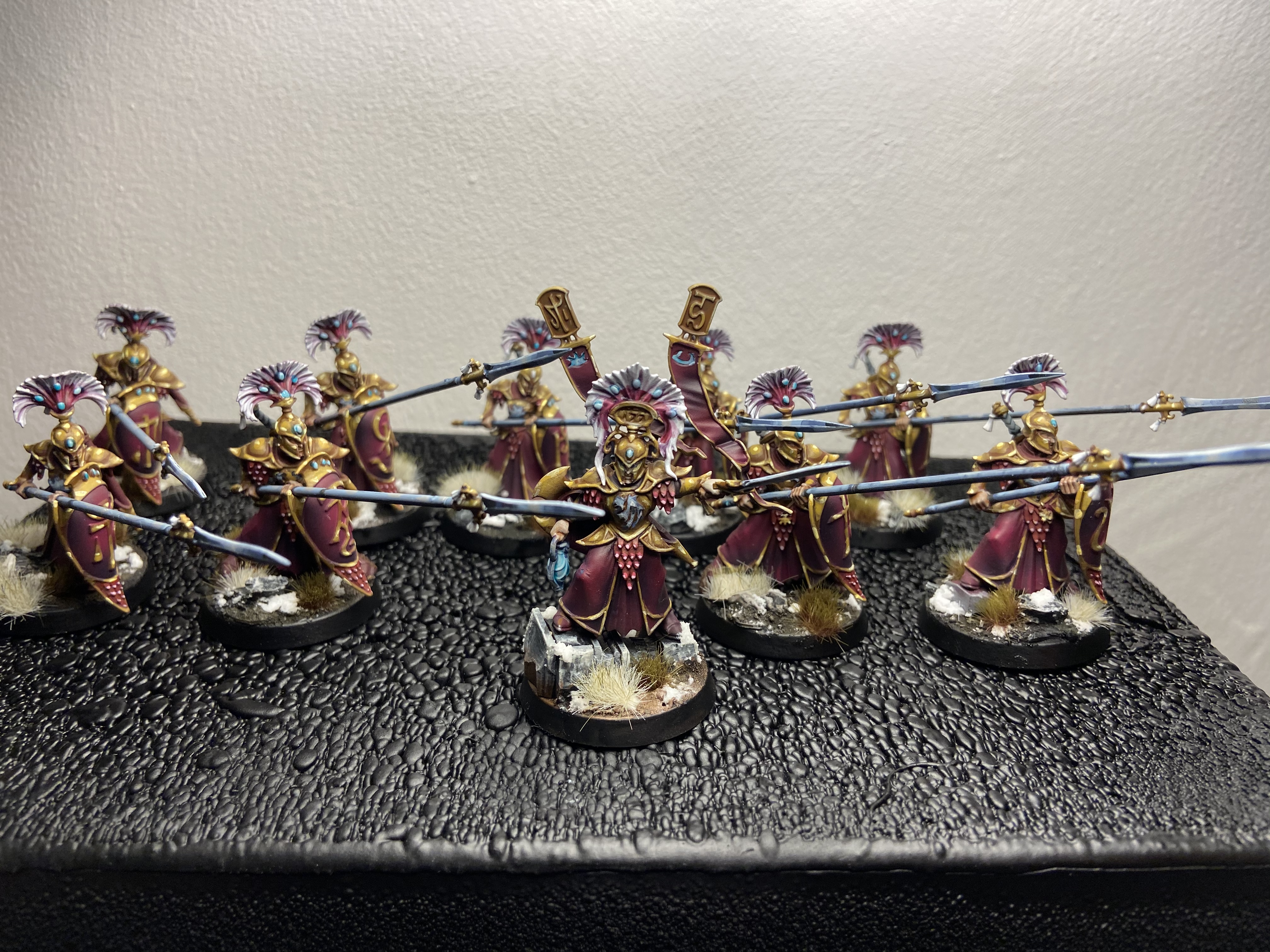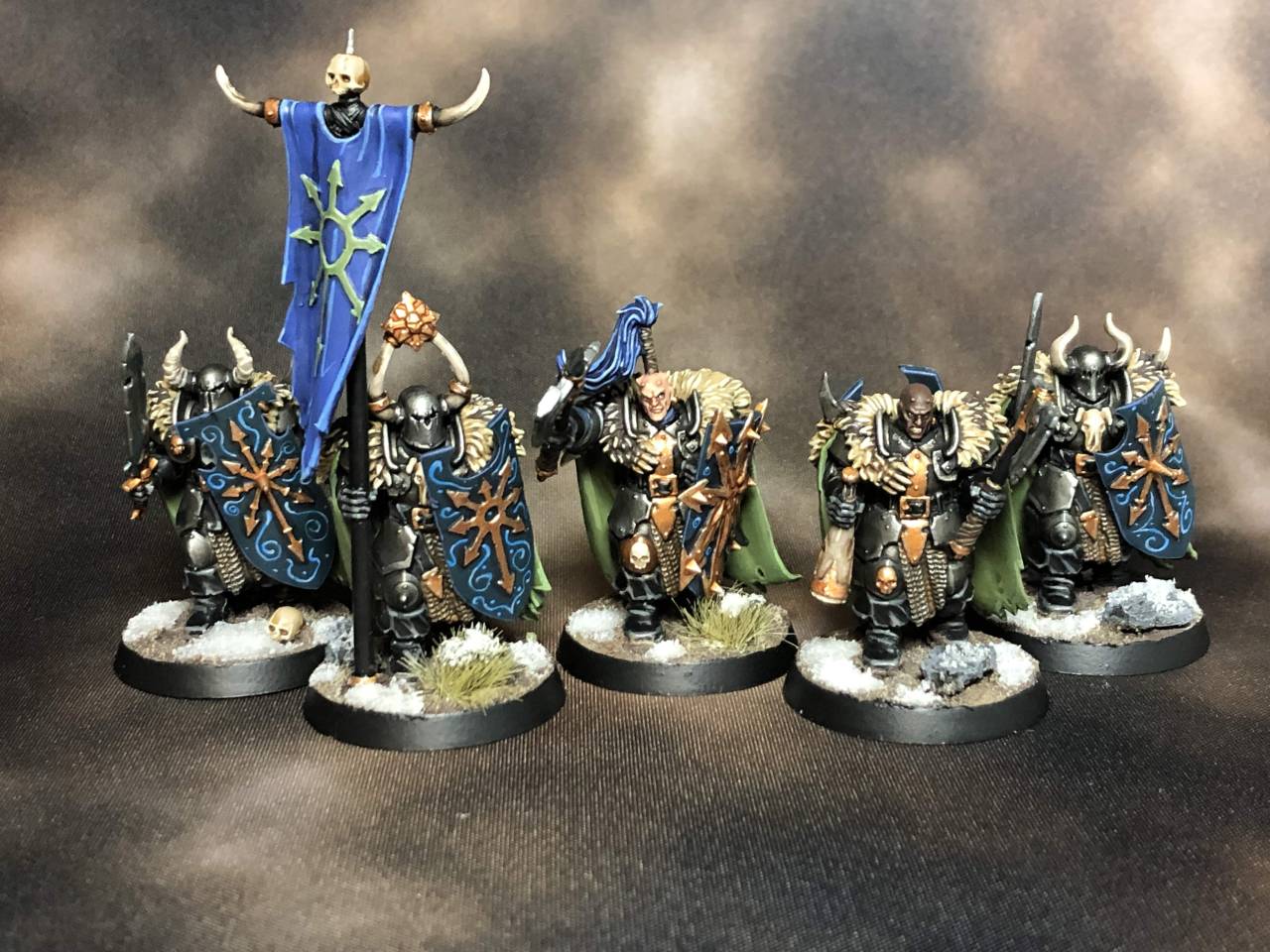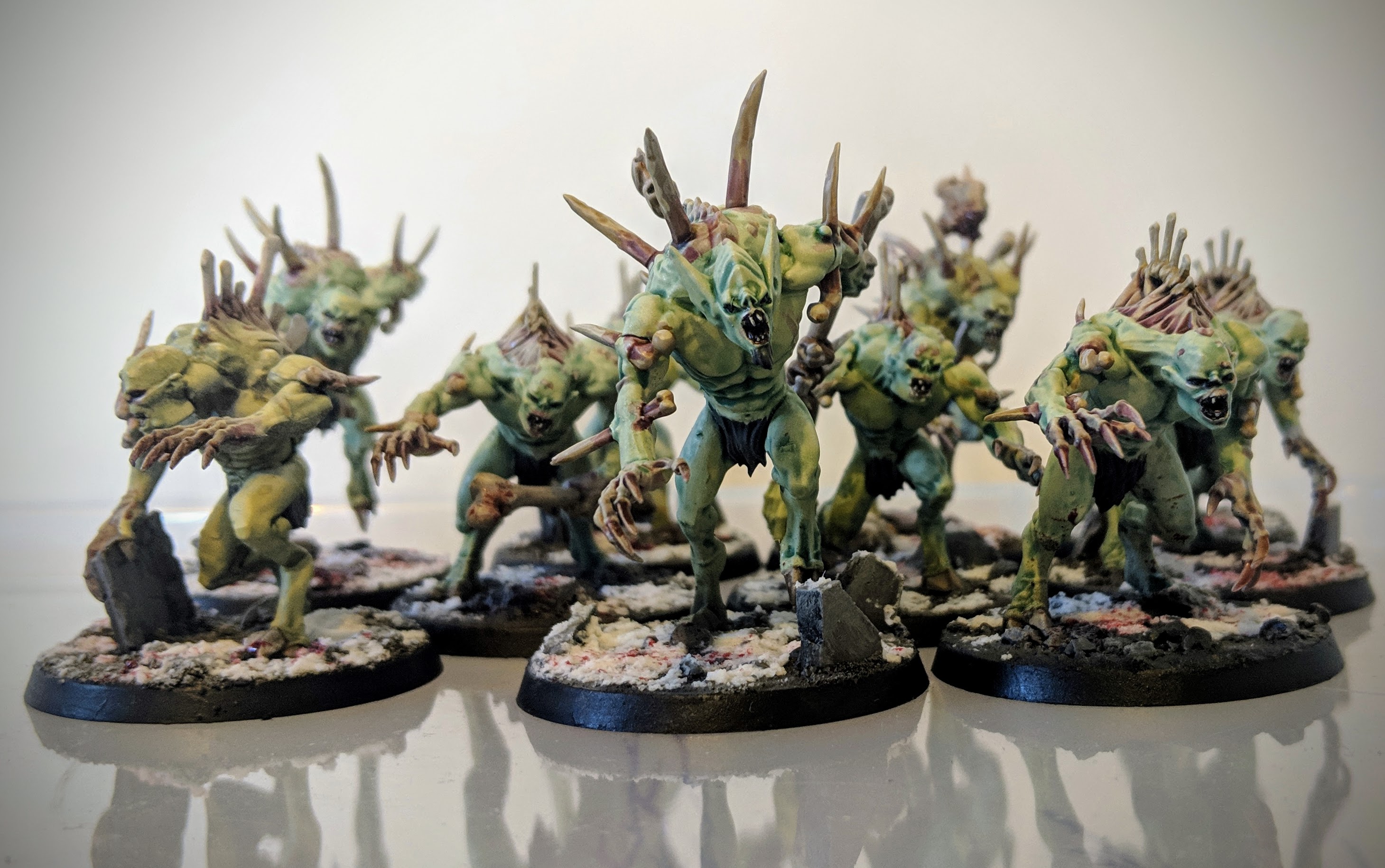Following last month’s Flashpoint, The Charnel Kingdom, White Dwarf has presented us with another Flashpoint taking place during the events of upcoming Broken Realms: Teclis. Continuing the fight within the Vertiginous Peaks, this flashpoint is a bit lighter on story than before. Included are two different battleplans, one to be used by any armies looting an ancient, fallen temple of Slaanesh within the Vertiginous Peaks of Hysh. The second explores a battle between the Slaves to Darkness invading Hysh, and the Lumineth defending their homeland. In both cases, the Flesh Eater Courts who call these mountains home are none too happy for visitors, and will attack both sides.

The Battleplans
The battleplans are introduced with much less fanfare than before. Unlike The Charnel Kingdom, there’s almost no story here, and it’s meant to be used more as a template to tell your own story. If you have White Dwarf #461, it would be most fluffy to refer to the Realm Rules for the Vertiginous Peaks, but they are not reprinted here, which seems like a missed opportunity. In both battles, a new mechanic is introduced that can be used if both players agree to it, The Cannibal Hordes. These are “AI-Controlled” Flesh Eater Courts who will come in during each player’s turn and attempt to disrupt both sides. We’ll go into this optional mechanic in more depth at the end.
Battleplan 1: The Temple of Myrmidesh
The first battlezone of the Flashpoint is open to any army, but neither player gets faction terrain as they are both far away from their homeland. The layout is very reminiscent of the Shifting Objectives Battleplan of the core book. Players set along the lengths of the table and place 3 potential relic zones: one in the center and the other two 24″ apart from one another. When a player controls one of the potential relic spots, they can search the site at the end of their turn. On a 1-5 they find nothing, and on a 6 they find it. Naturally if the first 2 sites come up empty, the last one will always contain the relic. Whoever controls the relic after turn 5 wins, but be wary, as the relic possesses dangerous power and players must roll a die for each unit within 6″ of the relic. On a 1, they’ll take a mortal wound.
The search is further complicated by the Cannibal Hordes, who can come in at the end of each player’s Hero phase. Theres a strategic element to this, as on a 1-5 the player can place them within 6″ of a shot edge, but on a 6 place them on any edge. These do not follow the usual “cannot deploy within 9″ of models” rule we see with deep strike/outflanking, so a smart player can use this to tie up his opponents forces, but must also be wary of hanging too close to the edge, as two of the potential relic spots are within 12″ of a short edge.
The only flaw I see here is since finding the relic is so rare, it seems smarter to try and eliminate spots, rather than find it, and leave it in the enter But do that, and your enemy will have a similar advantage, or the dice could unexpectedly hand it to you early. So you have to think smart of where you want the relic to end up, and where your opponent might want it to be.
Battleplan 2: Hallowed Ground
Unlike the last game, this battleplan does recommend Lumineth as the Defenders and any sort of Chaos army as the Invader’s, but notes you can run it with any armies. Only defenders get faction terrain this time, as this is their home turf. This map uses an asymmetrical layout, with the defenders controling a the 36″ on the along the long side of the field, with all 6 objectives inside, and invaders a measly 12″. 12″ are left outside of both deployment zones of the Northern side. Both forces seek to control as many of the objectives as they can. If they can hold at least 3 while the invaders hold none then they can declare victory. In the event of a tie, Invaders see a minor victory.
The Cannibal Horde is here to throw another wrench into things, and it works slightly different. This time, both players get to bring in a unit at the end of the turn, rolling off to see who places one first. They always come in on the northern side, unless there’s not any room, then they can enter on any side. This makes proper management of their numbers important because if theres no room to place them up top, they could come for you! They can control objectives, as well so be careful to cull their numbers while dealing with your opponent.
This is an interesting asymmetrical setup, especially with the Cannibal Hordes there to cause a mess in-between.

The Cannibal Hordes
We’ve seen how the Cannibal Hordes mechanic can bring new units onto the field, but how do they work once they get there? In addition to the battleplans, the Cannibal Hordes are listed as a separate mechanic, so you can add them to any existing battleplan. While the two battleplans presented in this Flashpoint line out how many to bring, the rules presented recommend building a force of Flesh Eater Courts about the size of the armies of the two players, to keep it balanced. It does not explain how they are added to the field, though presumably players should work out on their own where they should start.
Once the army has been composed, the game begins. Each round, the Cannibal Hordes get their own turn, going first on a 1-3 or after both players on a 4+. Their phases are broken into three phases: Delusion, Action, Combat and Battleshock.
Delusion is similar to a “Allegiance Ability” but are randomized each turn. A list of 6 possibilities ranges from buffs like Honed Steel which grants Rend -1 until the next turn, and Impervious to Pain which makes them immune to all but 6s to wound! There are also 2 that will either add or subtract one from behaviors in the Action phase.
Next the Action Phase determines behavior of the units. Similar concepts have been tried before in other narratives, Wrath of the Everchosen included rules for Wandering Beasts and this works very similarly. Players alternate activating units from the field. Players look up how far away the unit is from the nearest enemy unit, and roll on a table. The result will include options ranging from Gripped by Madness where they do nothing, to a Bloodthirsty Charge where they will attempt to move to the nearest unit as fast as possible. If they are already in combat theres potential to engage in Feeding Frenzy, allowing them to attack once (while also getting to attack again later. It is also possible, if the unit has a ranged attack, to attack here with the Hold action.
The Combat and Battleshock phases work the same as they do for players, all eligible units must fight if able, and then roll battleshock tests as normal. There are a couple more concessions for warscroll abilities, such as Abhorrents using their warscroll spell and Courtiers using their Muster abilities which will activate before doing anything else.
Overall, the Flesh Eater Courts were an ideal pick for this. They do not have many ranged attacks, so a simple behavior routine that consists of charging at the closest opponent approximates the army pretty well. Naturally a skill player is going to be a lot more shrewd on who they engage, but it will do the trick as the nuisance its meant to represent, while not being a complete pushover, or too complicated and risk slowing the game down too much.

Conclusion
I’m…not really feeling this one. If this seemed brief, it’s because there’s nothing more to talk about, that’s it. I didn’t much like how the last Flashpoint was far too linear narratively, and was only build around 2 specific armies, but this goes too far in the other direction. There’s almost no story to speak of here, and yet even as a toolkit for narrative games it’s not really deep enough to be more than of passing interest. I find that personally games take long enough without adding yet another “player” to the mix, and while it certainly seems like an interesting strategic hurdle that is just dangerous enough to not be ignored it’s not likely something I’m going to keep bringing back to games.
I’d like to see future flashpoints expand with deeper toolsets for narrative players, or go into more stories. The Anvil of Apothesis from the last Flashpoint was fantastic and if the General’s Handbook 2020 version had any flaws, its that its far too general to be exciting. I’d love to see more of those for different armies. The alternative is exploring more stories, as I really found myself engaged with the storyline of the original, even if I think it could have benefitted from branching paths or changes to subsequent battles. This does include a short story, but its completely unrelated to the goings-on here, focusing on the fate of Ven Brecht, the Stormcast who escaped Morathi’s clutches at the end of Broken Realms: Morathi.
This ultimately feels like someone came up with the idea for the Cannibal Hordes and an excuse was found retroactively to use them, as the battleplans here only serve to show how they can be used in a game. The connection to the first’s narrative is spurious at best, outside of taking place in the same zone there is no mention of the previous battle between the Flesh Eater Courts and Ossiarch Bonereapers. Hopefully they continue to do flashpoints for Age of Sigmar but just add a little more to it.
Have any questions or feedback? Drop us a note in the comments below or email us at contact@goonhammer.com.


